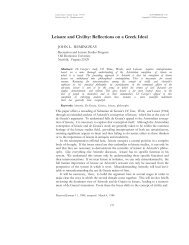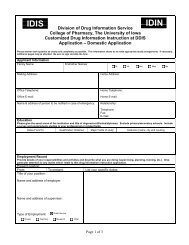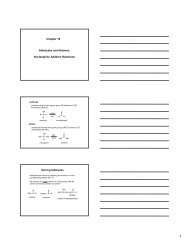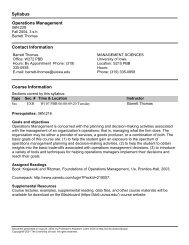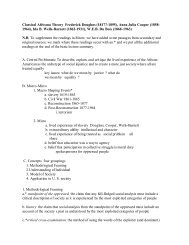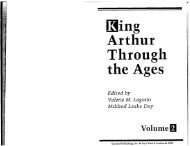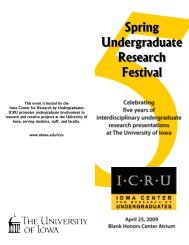Twenty-Five Years of Batson: An Introduction to ... - University of Iowa
Twenty-Five Years of Batson: An Introduction to ... - University of Iowa
Twenty-Five Years of Batson: An Introduction to ... - University of Iowa
Create successful ePaper yourself
Turn your PDF publications into a flip-book with our unique Google optimized e-Paper software.
2012] TWENTY-FIVE YEARS OF BATSON 1421<br />
appellate judges had reviewed district court denials <strong>of</strong> habeas corpus<br />
petitions based on <strong>Batson</strong> claims. In both, the Supreme Court found that the<br />
Ninth Circuit erred in failing <strong>to</strong> accord state courts the deference owed <strong>to</strong><br />
step-three fact determinations.<br />
In Rice v. Collins, the defendant challenged the strike <strong>of</strong> a single black<br />
juror. 244 The prosecution explained that the juror had “rolled her eyes,” that<br />
she “was young and might be <strong>to</strong>o <strong>to</strong>lerant <strong>of</strong> a drug crime,” and that she was<br />
“single and lacked ties <strong>to</strong> the community.” 245 The trial judge ruled that the<br />
juror’s youthfulness was a sufficient explanation. 246 The state appellate court<br />
affirmed, finding both the “youth” and “demeanor” reasons <strong>to</strong> be legitimate<br />
and supportive <strong>of</strong> the strike. 247 After a federal district judge denied habeas<br />
relief, the Ninth Circuit reversed. 248<br />
On appeal, all nine Justices tersely concluded that the Ninth Circuit had<br />
“improperly substituted its evaluation <strong>of</strong> the record for that <strong>of</strong> the state trial<br />
court.” 249 The habeas statute allowed relief only if the state court “made an<br />
unreasonable factual determination.” 250 Consequently, the issue was whether<br />
the trial court’s “credibility determination”—i.e., the decision “<strong>to</strong> accept the<br />
prosecu<strong>to</strong>r’s explanation” that it had struck the juror due <strong>to</strong> “her youth and<br />
her demeanor”—”was unreasonable.” 251 The Court concluded that it was<br />
not. The juror’s indication that she believed the crime charged should be<br />
illegal and her affirmation <strong>of</strong> impartiality did not mean that the<br />
government’s concern that she might be “<strong>to</strong>o <strong>to</strong>lerant <strong>of</strong> the crime” was “a<br />
pretext.” 252 There may have been “reason <strong>to</strong> question the prosecu<strong>to</strong>r’s<br />
credibility,” but because “[r]easonable minds . . . might disagree” on that<br />
issue, it was “permissible” for the judge <strong>to</strong> accept the prosecu<strong>to</strong>r’s<br />
explanation and reject the <strong>Batson</strong> claim. 253<br />
Felkner v. Jackson proved even easier. 254 The defendant objected <strong>to</strong> the<br />
removal <strong>of</strong> two black jurors. 255 According <strong>to</strong> the prosecu<strong>to</strong>r, he struck one<br />
because he asserted that he had frequently been s<strong>to</strong>pped by police based on<br />
“his race and age” and might have “animosity.” 256 He struck the other<br />
244. Rice v. Collins, 546 U.S. 333, 336 (2006).<br />
245. Id. The prosecu<strong>to</strong>r had also referred <strong>to</strong> the juror’s gender and “[t]he trial court,<br />
correctly, disallowed any reliance on that ground.” Id.<br />
246. Id. at 336–37.<br />
247. Id. at 337.<br />
248. Id.<br />
249. Id. at 337–38.<br />
250. Id. at 339.<br />
251. Id.<br />
252. Id. at 341.<br />
253. Id. at 341–42.<br />
254. Felkner v. Jackson, 131 S. Ct. 1305 (2011) (per curiam).<br />
255. Id. at 1306.<br />
256. Id. (internal quotation marks omitted from second quotation).





